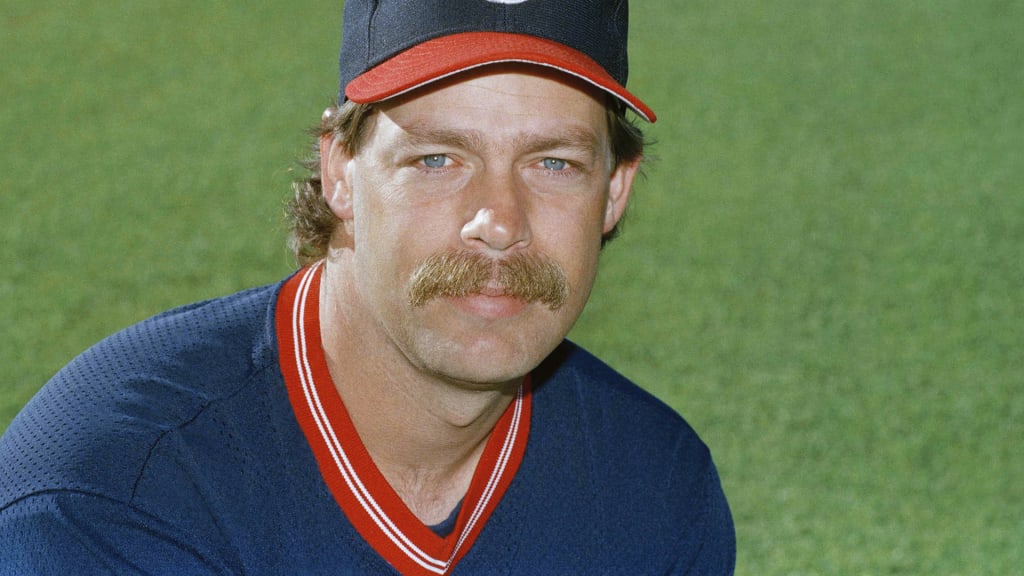
We’ve become so accustomed to flame-throwing hurlers like Emmanuel Clase and Aroldis Chapman -- or someone who boasts a devastating out pitch like Mariano Rivera’s cutter -- closing games that pitchers like Doug Jones are easily forgotten. Today is a day to remember Jones, who passed away Monday from complications due to COVID-19. He was 64.
His is a baseball story no one could have seen coming. In the mid-80s, after one brief and unsuccessful stop in the Majors with Milwaukee in 1982, it looked like Jones’ professional baseball career was over. But in a last-ditch effort to get some pitching help, Cleveland gave him an opportunity to showcase himself in Spring Training. And from there, he began a strong, 15-year career that consisted of seven seasons in Northeast Ohio. Now, the city he once called home must find a way to say goodbye.
Solely looking at Jones’ career stats sheet, it’d be perplexing to those who aren’t familiar with his journey how a 25-year-old hurler who had had no success could suddenly emerge and record 37 saves during an All-Star season with Cleveland in 1988. But this was Jones’ underdog story.
A starter who had a lukewarm heater, sitting in the low-to-mid 80s with a high contact rate, rarely works out in the Majors. That’s why Jones failed to crack his way into the big leagues with the Brewers. And after he spent the next few seasons in the Minors, his opportunity to become a regular big leaguer was waning as his age continued to climb.
But Cleveland needed pitching in the worst way -- so badly that it was willing to take a chance on Jones and invite him to big league Spring Training. From there, the transition from starter to reliever took place and in that process, he discovered a devastating changeup. If he couldn’t throw harder, well, he’d throw slower, keeping hitters off balance with his unique slow, slower and slowest velocities. And the ultimate dark-horse narrative was born.
Jones enjoyed a 16-year career before he retired in 2000, ending with 303 saves across seven clubs. His breakout season was in ’88 as a 31-year-old, owning a 2.27 ERA with 72 strikeouts and 16 walks in 83 1/3 innings and 37 saves with Cleveland. And before departing for Houston in 1992, Jones racked up two more All-Star selections, during in his 32-save season in ’89 and a 43-save season in ’90. Jones' dominance came to an end in ’91 when he lost the closing job to Steve Olin and was non-tendered at the end of the season. Even then, he still had one more comeback story up his sleeve.
After stops in Houston, Philadelphia, Baltimore, Chicago (Cubs) and Milwaukee, Jones found his way back to the city that helped jumpstart a tremendous career 12 years prior. Jones was traded back to Cleveland for Eric Plunk at the 1998 Trade Deadline, and he owned a 3.45 ERA in 23 appearances in the second half of the season to help get his team into the playoffs. The righty made his first postseason appearance in his 15th big league season, tossing 2 2/3 innings during a loss in Game 1 of the ALDS against Boston. His time in Cleveland came to an end after he was left off of the ALCS roster.
Despite his age, Jones found work with Oakland as a 42- and a 43-year-old in 1999 and 2000. He logged at least one save in each season, pitched in at least 50 games and kept his ERA under 4.00. Of his 303 saves, just one of them came before he turned 30 years old.
Over the past decade, Jones bounced around coaching high school and Minor League teams, making his way to Cleveland in 2019 to take part in Progressive Field’s All-Star Game festivities, interacting with fans who vividly remember their beloved '90s Cleveland teams.
Jones' story is unlike any other in Major League Baseball, blossoming when most are at the tail end of their careers. He will no longer be able to attend Cleveland activities or coach up-and-coming prospects, but his story will continue to inspire, demonstrating that it’s never too late to find success.

